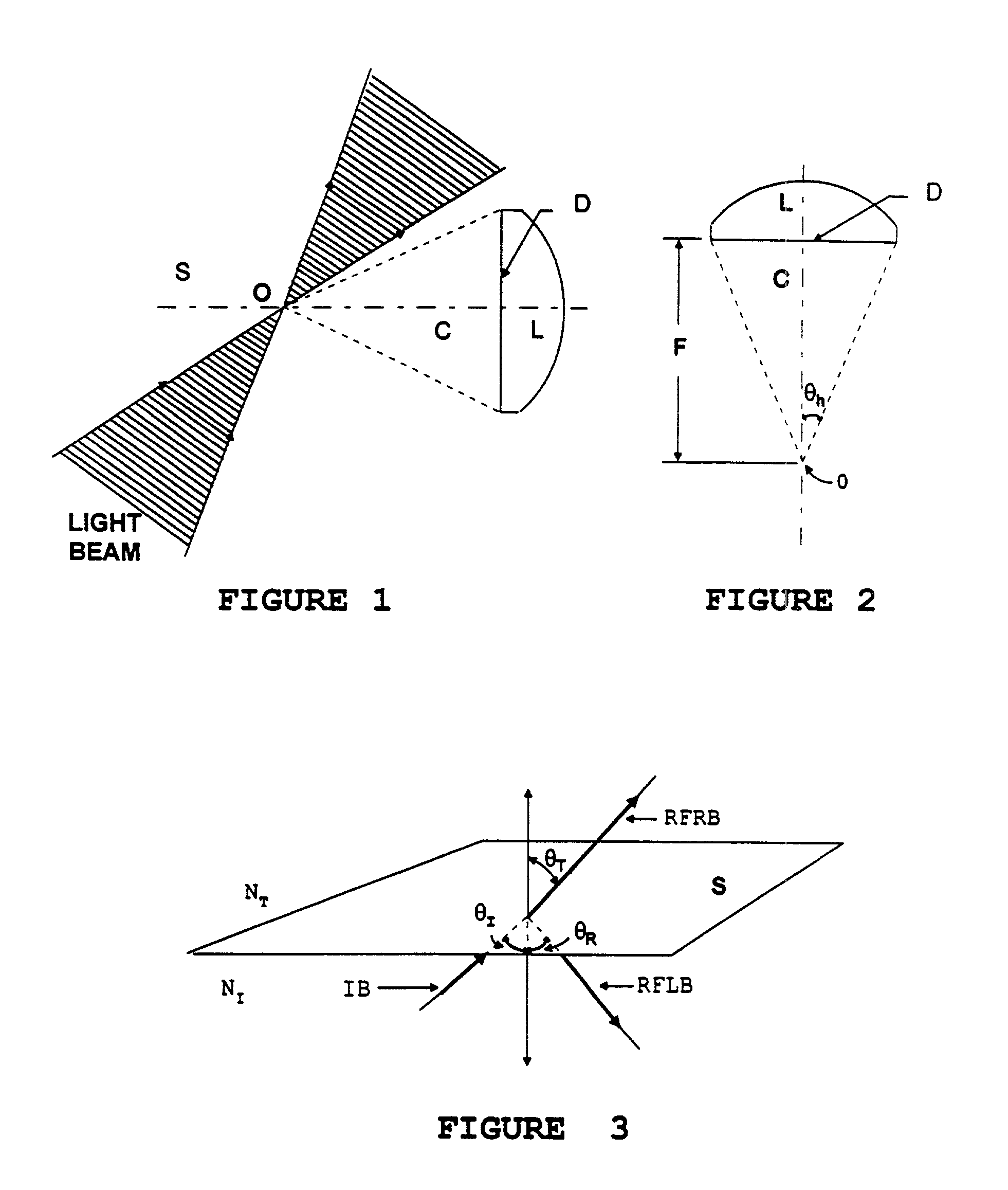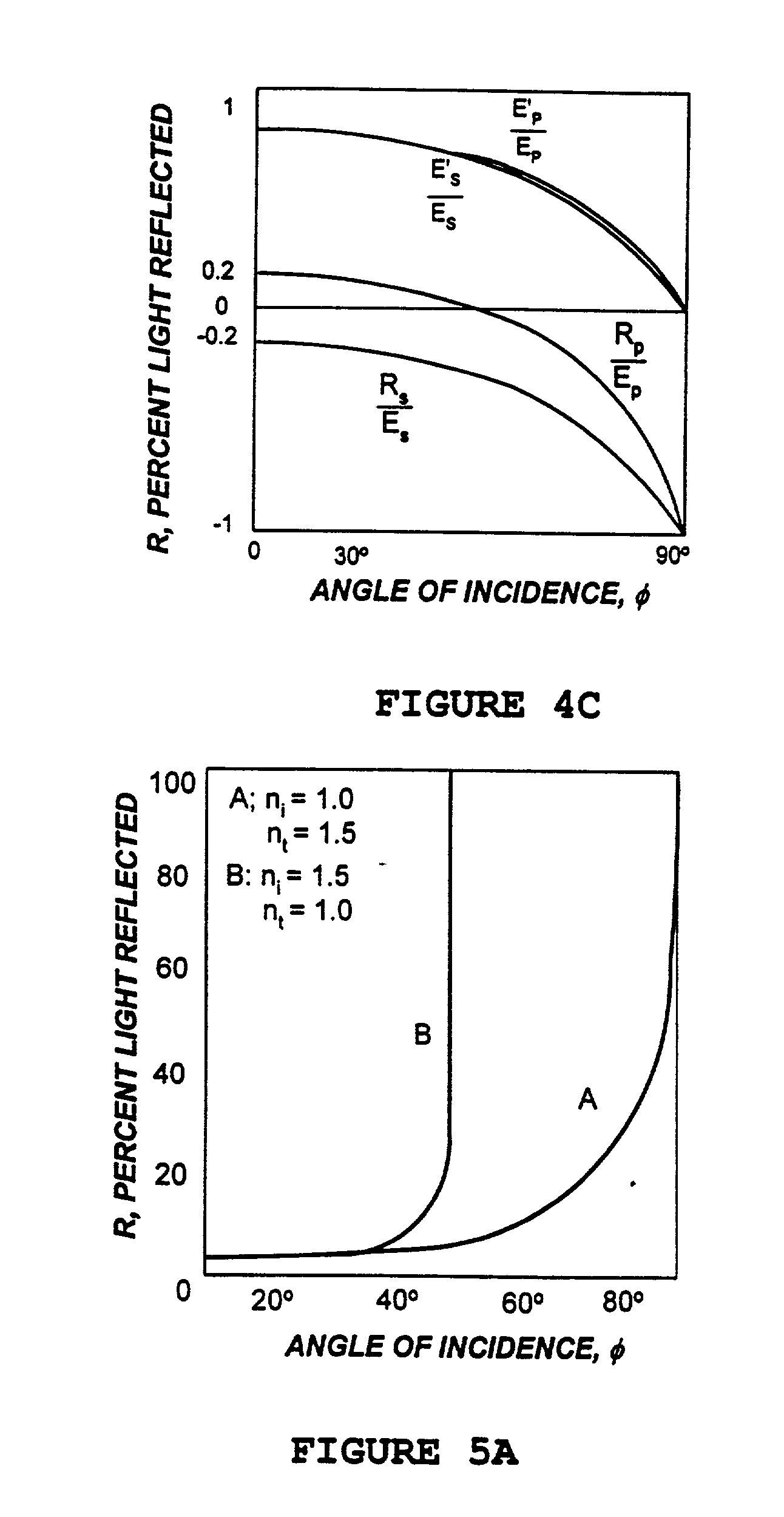Methods for providing extended dynamic range in analyte assays
a technology of analyte assay and dynamic range, which is applied in the direction of optical radiation measurement, fluorescence/phosphorescence, instruments, etc., can solve the problem that the electronic noise of a system may significantly interfere with the precision of quantitation
- Summary
- Abstract
- Description
- Claims
- Application Information
AI Technical Summary
Benefits of technology
Problems solved by technology
Method used
Image
Examples
examples 6.1 , 6.2
Examples 6.1, 6.2, and 6.3
Calculated and Measured Relative Scattering Power of Comparable Polystyrene and Gold Particles
[0828] The results are presented in Tables 6,7, and 8. Calculations were performed using known light scattering relationships and our newly defined relationships as previously described. Experimental measurements were done for particles in water by detection of the light scattered by particles free in solution at a given illumination intensity and wavelength using the exemplary Photometer. The following steps were performed.
[0829] (a) Illuminate the control and comparable sized particle samples with the same incident light composition and intensity.
[0830] (b) Determine the light signal emitted from a control tube containing water but no particles.
[0831] (c) Determine the light signal emitted from a tube containing particles at known concentration.
[0832] (d) Subtract the control light signal value (b) from the light signal value of (c).
[0833] (e) Compare light signa...
example 6.4
Measured Relative Signal Generating Power of Fluorescein and Gold Particles--White Light Illumination.
[0834] The results are shown in Table 10. The same method of light detection was practiced to determine the light signal emitted from all samples in a 6 mm by 50 mm glass tube. No optical filters were used in the measurement of the light signal from either the gold particles or the fluorescein.
[0835] All measurements were made in water. The solution containing the fluorescein had a pH of 8-9. The light signal value of a tube containing only water was subtracted from the gold particle or fluorescein value in order to obtain the light signal due to just the fluorescein or gold particles.
[0836] The following steps were performed for the measurement of the light signal from particles.
[0837] A. (a) Illuminate all samples with the same incident light composition and intensity.
[0838] (b) Determine the light signal emitted from a control tube containing water but no particles.
[0839] (c) Det...
example 6.5
Measured Relative Signal Generating Power of Fluorescein and Gold Particles--Monochromatic Illumination
[0847] The results are given in Table 11. These results have not been corrected for differences in incident light intensity. Monochromatic incident light at wavelengths where maximum light emission occurs from fluorescein (490 nm) and where maximum light scattering occurs form the gold particles was used. The incident light intensity at 490 nm was slightly lower than the intensities used for the gold particles and ranged from about 86 percent of the intensity at 520 nm to about 80 percent of the intensity used at 565 nm. On the other hand, the quantum efficiency of the photomultiplier tube ranged from 0.34 at the primary emission wavelength of fluorescein (520 nm) while it was about 0.18 at 560 nm.
[0848] Except for the incident wavelength, the same method of light detection was used on all samples in a 6 mm by 50 mm glass tube. No optical filters were used in the measurement of the...
PUM
| Property | Measurement | Unit |
|---|---|---|
| Time | aaaaa | aaaaa |
| Time | aaaaa | aaaaa |
| Time | aaaaa | aaaaa |
Abstract
Description
Claims
Application Information
 Login to View More
Login to View More - R&D
- Intellectual Property
- Life Sciences
- Materials
- Tech Scout
- Unparalleled Data Quality
- Higher Quality Content
- 60% Fewer Hallucinations
Browse by: Latest US Patents, China's latest patents, Technical Efficacy Thesaurus, Application Domain, Technology Topic, Popular Technical Reports.
© 2025 PatSnap. All rights reserved.Legal|Privacy policy|Modern Slavery Act Transparency Statement|Sitemap|About US| Contact US: help@patsnap.com



